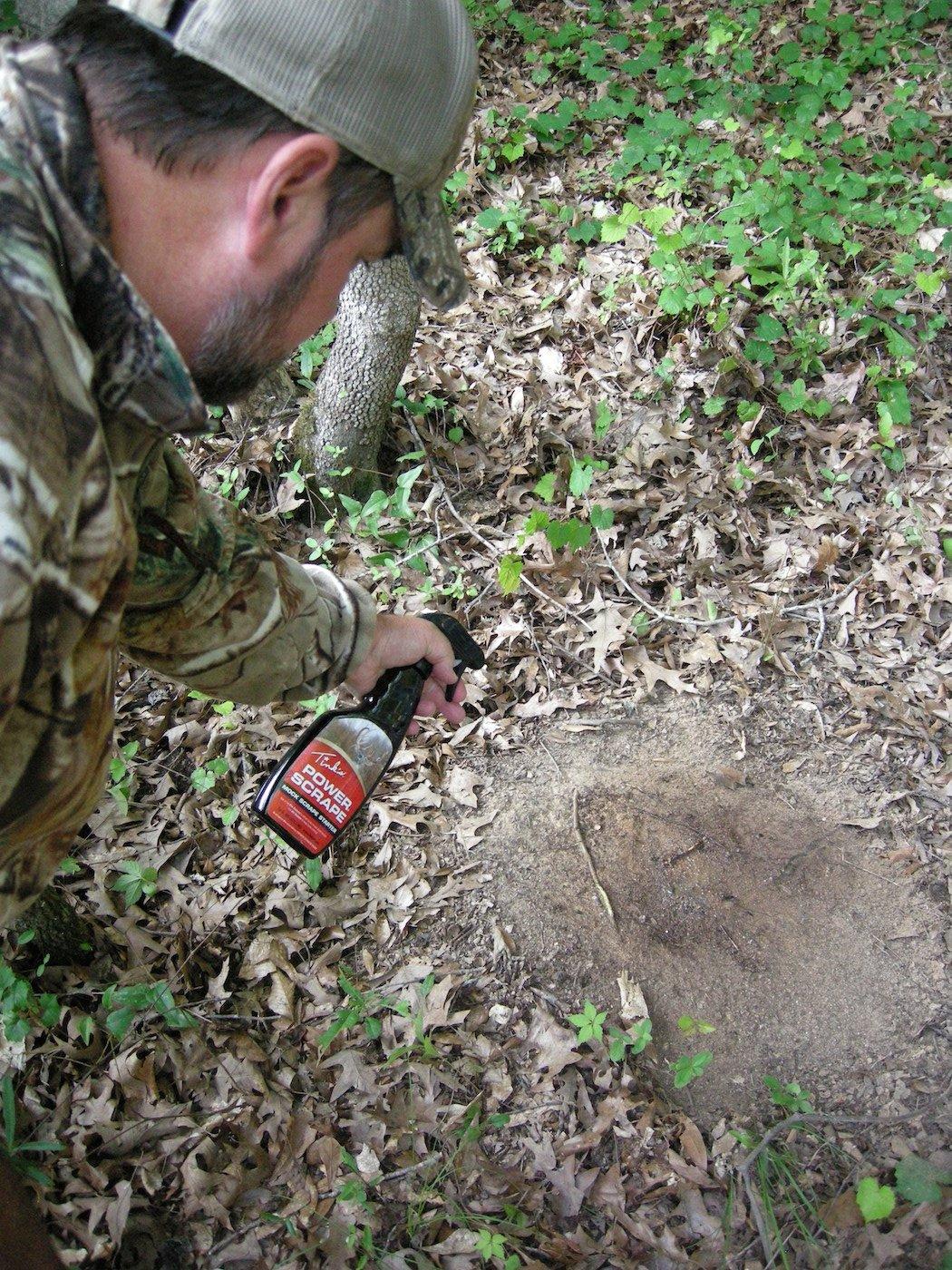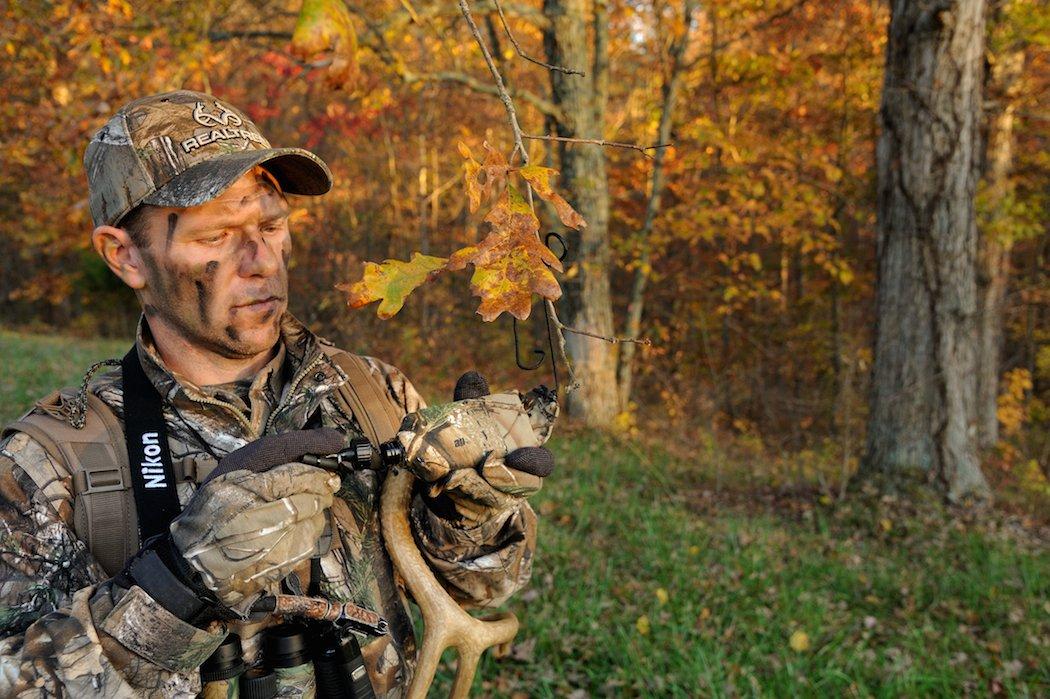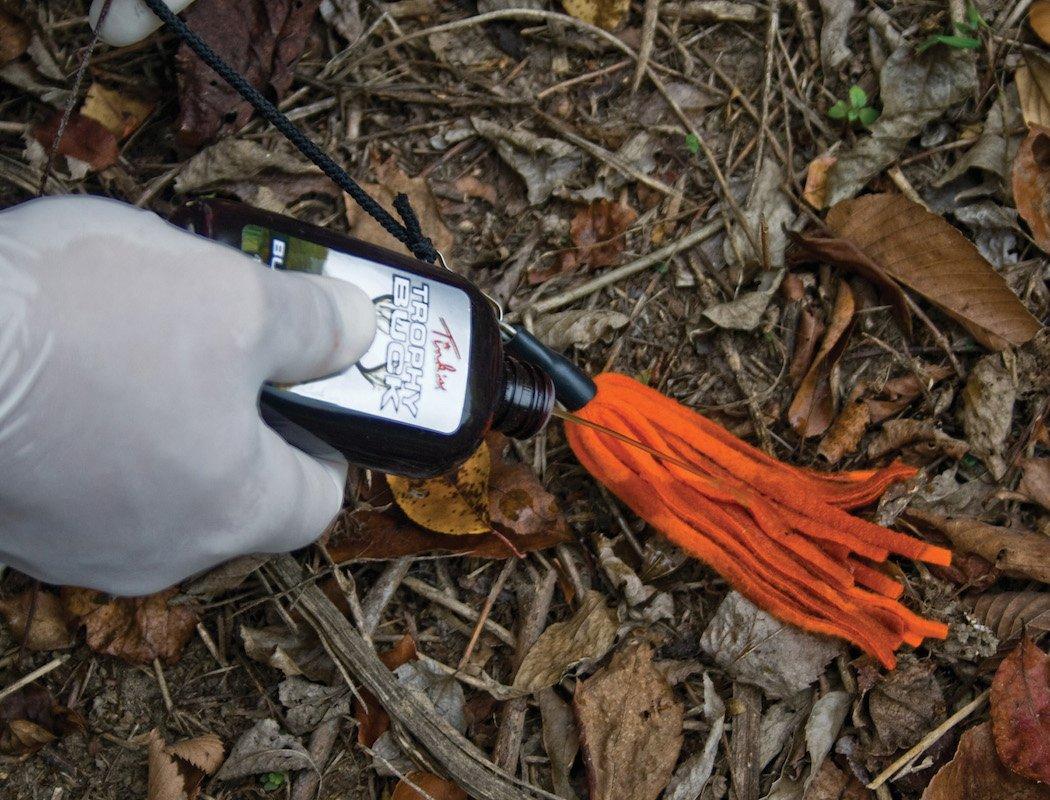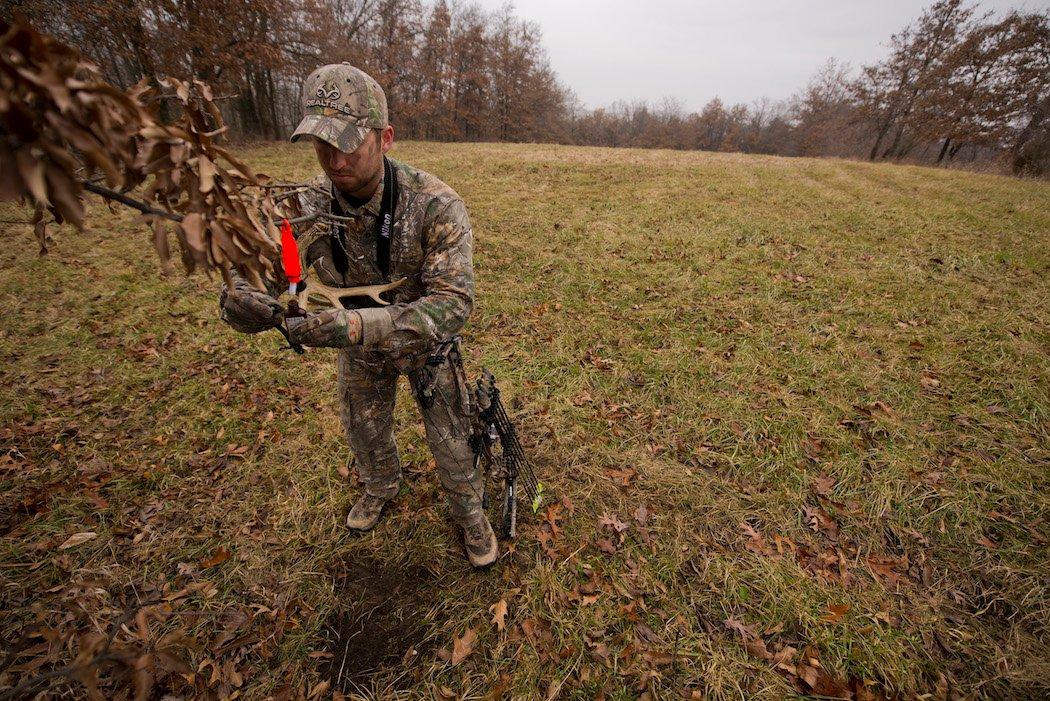Turn His Nose Into His Biggest Weakness
White-tailed deer are olfactory-driven creatures. They depend on their keen sense of smell more than any other of their perceptions to avoid predators, locate food, and so much more. While many whitetail hunters depend on calls, food products (where legal), or decoys to bring bucks beneath their stands, many hunters fail to consider this incredible sense of smell while formulating plans of attack. Try these tips to get the most from whitetail scents this fall, and help set up more and closer shots at trophy bucks during the rut.
Scrape Seeding
Scrapes, more accurately, community scrapes, are used extensively by all members of the whitetail herd—mature and young bucks and does alike—as a means of communication. Scrapes might actually begin to appear by early to mid September, but become more conspicuous as the rut kicks in and pawing becomes more pronounced.

One of the easiest ways to accomplish this—especially during midweek days—is through the use of a scent-dripper system like the Magnum Scrape-Dripper from Wildlife Research Center. A special design dispenses scent only during the warmest periods of the day. Once a buck detects a pattern of fresh scent appearing only during daytime hours, he becomes more inclined to appear during legal shooting hours.
In the big-woods settings of northern Idaho where I hunt most, seeding scrapes has become my No. 1 ploy for ambushing big bucks. The key is finding major scrapes, and ignoring minor frustration-displacement scrapes, which are constructed and seldom revisited. Major scrapes appear early and grow in size as the season progresses.
Mock Scrapes
While scrape hunting is effective under the right circumstances—competition for limited does helps immensely, making scrapes less important in areas where does far outnumber bucks—not all scrapes appear exactly where needed. Too often major scrapes appear in places making it impossible to keep your offensive scent out of the noses of approaching deer or in places where it's difficult to access your stand without alerting them.

Start mock scrapes a couple weeks before bucks begin to show interest in does, and they become that much more effective. Of course, they can certainly prove effective when constructed on the fly during the rut. If started early, use scents reflective of the season. Tink's Power Scrape scent, for instance, come in pre-rut starter and rut-date formulas. Scrapes invariably include an overhead or licking branch, which deer use to deposit forehead and preorbital gland scents. Use a rake or stick to scratch out a clean patch of ground, which also provides a visual. Start the scrape with bottled scents applied directly onto the licking branch and poured into the scrape.
One of my favorite approaches here continues to be Code Blue's Grave Digger—sterilized dirt infused with time-released scent pellets in pre-rut and rut formulas. Each time these scent pellets become wet or are pawed by deer, they release fresh scent. Or, allow a Magnum Scent Dripper to create the illusion of consistent use, charged with something like Code Blue's Scrape Mate or Wildlife Research's Golden or Active Scrape lures.
This can prove a hit-and-miss proposition: Mock scrape sometimes ignored; other times hammered. I've experienced the best results at sites already heavily traveled by deer and less success attempting to pull deer off established lines of travel to my needs.
Drag Lines
In areas with healthy buck-to-doe ratios, where competition for does is more intense, I've also experienced worthwhile results by creating drag lines with estrous-doe scent. This can become especially useful for pulling a buck off a major scrape presenting scent-control issues or a lack of a viable tree to climb.

I've also developed an approach I believe makes my drags more effective. I attach the scent pad not only to the standard drag cord, but also attach that drag cord to a long, lightweight switch of willow or similar material (wearing scent-free gloves, of course). While dragging scent upwind of my stand, I take care to walk on clean trails or ground, while holding the switch at arm's length and depositing scent 10 to 20 feet upwind of my own spoor. In this way, if I've accidently accumulated scent on my boots or pants cuffs, I'm less likely to alert wary bucks.
Without a scrape to play off of, obvious points of interest include game trails, field edges, and even fence lines of adjoining properties you wish to pull bucks across. If I have time, and it does not risk alerting area deer, I make two or more drag lines, all leading into my stand site. I take great care to steer bucks away from ground downwind of my stand position.
Scent Stops
In lesser whitetail habitats—just like calling or decoying—using scents in a straightforward, proactive manner will typically prove less successful, though they aren't completely worthless.

Whenever possible, I also try to place a scent like Code Blue's Tarsal Gland Gel or Wildlife Research's Trail's End behind a stump, tree trunk, or bush, where deer stopping to smell the scent leave vitals exposed while their eyes are shielded behind the obscuring object. This makes it easier to position myself for the shot and make the conspicuous move of drawing my bow.
Hunters in prime habitats would do well to remember this as well, terminating drag lines behind such cover to create situations where it's easier to hit anchor without being detected.
Deer Scents and CWD
Will using natural deer scents to attract white-tailed deer soon become a thing of the past?
Alaska, Arizona, Virginia, Vermont, CWD-zones in Pennsylvania and others have banned the use of real deer urine in response to mounting concerns over Chronic Wasting Disease (CWD). They have outlawed natural deer scents based on outbreaks of the incurable prion disease. Synthetic urines/scents and non-cervid urines/scents (fox, for example) are still allowed.
Opponents say this is a knee-jerk reaction with no solid evidence to justify their concerns. Proponents say the risk is no longer acceptable. Certifying scent products CWD-free requires actually killing and testing 10 percent of a captive herd, a measure few manufactures are willing to accept.
Expect this to become a hot-button topic in the future, and keep an eye on your state's regulations regarding scents to assure you don't unknowingly break the law.
Don't Miss: Do You Pee in Scrapes and Mock Scrapes?
Editor's Note: This was originally published on November 4, 2015.
Are you a deer hunter wanting to learn how to accomplish your goals? Check out our stories, videos and hard-hitting how-to's on deer hunting.







